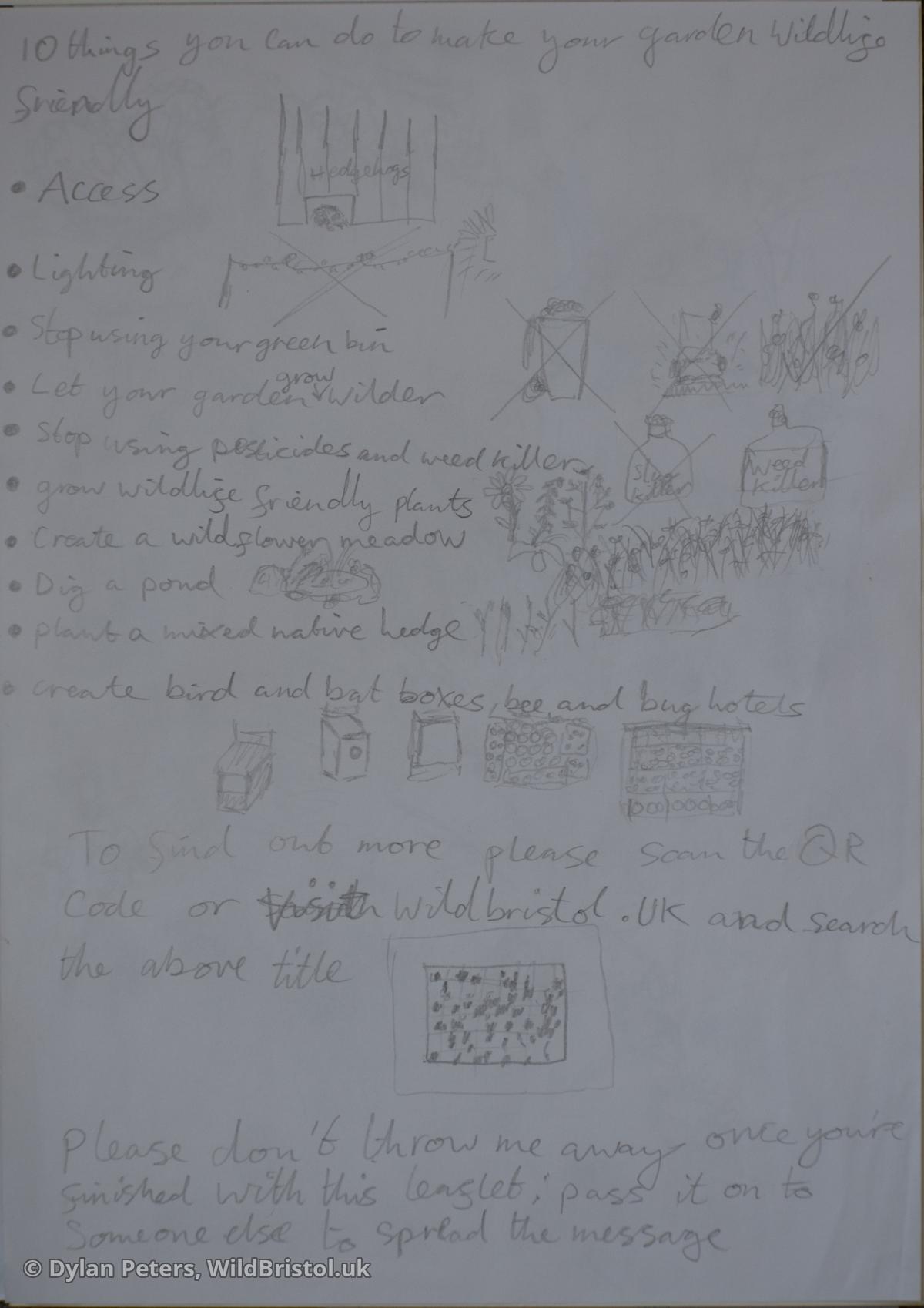10 things you can do to make your garden more wildlife friendly


1.) Make your garden more accessible:
Most modern day gardens are surrounded by 2m plus high, prison worthy fencing with no gaps. You cannot expect ground dwelling creatures such as hedgehogs to use your garden if they can't even get in.
As a minimum cut a hole at the base of your fence about the size of a CD case on each side of your garden, instead you could dig a shallow sloping trench underneath or even better rip that hideous fence down and replace it with a lovely native hedge. For more alternatives please see Fence Vs Hedge.
2.) Change your outdoor lighting:
It is well known that bright white lights are a big cause for decline in biodiversity.
Replace your lighting with wildlife friendly lighting amber tones. Or even easier turn your lighting off completely. Do you really need it? (No!)
3.) Keep your Green Waste In the Garden:
Say no to your green bin.
What! "I thought putting green waste in a green bin to get composted was environmentally friendly" (I hear you say) well it's not.
By doing so you are getting rid of organic matter (a vital resource) from your garden thereby depleting the soil, causing unnecessary emissions from the transportation of it by the council, getting rid of what would otherwise be food and habitat for so many creatures and finally you are essentially throwing away money!
Instead compost it or even better create a vegetation pile for slow worms and all sorts of creatures. You could bury it, sweep the clippings under the hedge, hide it behind the shed, use it as a mulch. Just don't throw it away!
4.) Let your garden grow wilder:
Doing nothing does a lot.
Allow your lawn to grow long in the spring and Summer. Even a strip can help a lot. By allowing the native flora to pop up from Daisies to Dandelions and Buttercups you will be providing for endless invertebrate life from Hoverflies, Butterflies and Moths to Bees and Spiders which intern provides food for birds, bats, mammals and higher food-chain species. You may even be extremely lucky and get Orchids appearing!
Hands off the clippers - let your shrubs and hedging grow taller
5.) Stop using Pesticides and Weedkiller:
Chemicals used to prevent the existence of wildlife should be banned in places where they really aren't necessary such as gardens, parks and allotments. Even so call 'organic' Slug Pellets (which are actually worse) can have horrendous effects to wildlife populations not just slugs and snails.
6.) Add Wildlife Friendly Plants:
Swap your beds, boarders, pots and hanging baskets from bedding plants such as petunias and Marigolds to wildlife friendly alternatives. Spectacular natives such as Greater and Common Knapweed, Ox-eye Daisy, Bird's-foot Trefoil, Red Campion, Field Scabious, Tufted Vetch, Cowslips, Primroses, Musk Mallow, Wild Carrot, Teasel to old time classics such as Lavender, Alliums, Salvia, Wild Geraniums, Snap Dragons, Borage etc. are not only a magnet to wildlife; they also aren't munched nearly as much by slugs and snails.
7.) Create a wildflower meadow:
8.) Dig a pond:
From a washing up bowl to a bath tub or massive pond. What ever the size, water is vital to attracting wildlife.
9.) Plant a mixed native hedgerow:
Hedgerows containing a good mix of Native species such as Common Hawthorn, Blackthorn, Hazel, Common Dog-rose, Elder and Holly are great on many levels - they:
- are excellent for wildlife. A hedgerow with a good mix of species has the potential to provide for 1000s of others; with shelter and nesting for birds and small mammals, foliage - food for 100s of insect larvae such as caterpillars and nymphs, flowers for 1000s of invertebrates and berries for birds and mammals and of course yourself if you wish
- create boundaries but still allow hedgehogs and other small animals to pass through easily
- don't need much maintenance. Once planted you don't really have to do anything aside from trimming it every 3-5 years or so or even not at all if you have the space. Because they are densely planted they grow more slowly and stunted but will become thinner and gappier over time if you don't ever cut them. If you have limited space you may want to cut it more frequently but always only ever do so in mid-winter
- protect and stabilise the soil, preventing erosion, returning organic matter and prevent surface run-off by allowing water to penetrate the ground
- are strong and flexible and don't get knocked over during storms (unlike fencing) as they allow wind to pass through
- are aesthetically pleasing as they change throughout the seasons - you can always have something to look forward to what ever the time of year from blossom in the spring, to bright berries in the autumn
10.) Create bird and bat boxes, bee and bug hotels:
Bird and Bat Boxes, Bee and Bug hotels, Hedgehog Houses to good old Log Piles and rubble piles
All that wood you have ready for the bonfire, your Christmas tree. Leave it instead to rot and provide homes for beetles, frogs and toads etc.